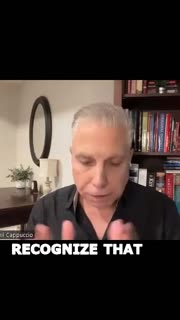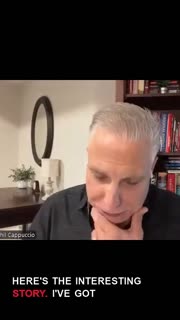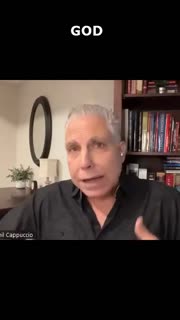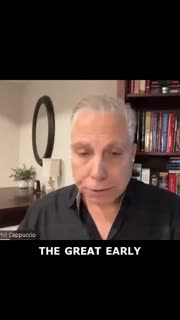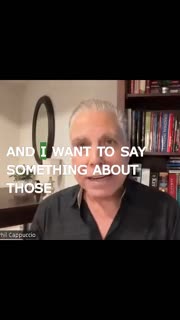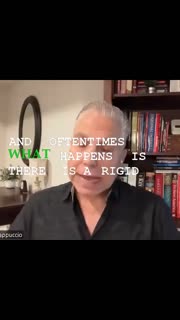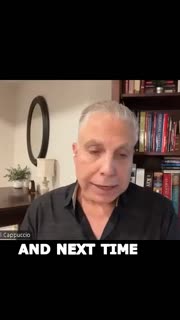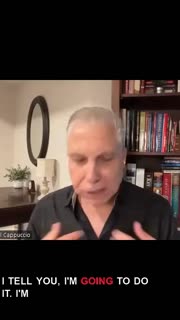Revival Through Hunger: Lessons from Church History
Devotional
Sermon Summary
Bible Study Guide
Sermon Clips
1. "And you know what? I recognize that in every move of God, those that are impacted by that move, not only does it deeply satisfy the hunger they had, but it begins to spark greater hunger to see God do even greater things. And so it almost, it leads to another... Hungering for God to move. To move even in greater ways." [02:03] (24 seconds)
2. "But here's the interesting story. I've got good news. I've got bad news. Here comes the secular press. The editor at the time of the L.A. Times, and I just passed the L.A. Times building on my way to the airport of the L.A. Times. They were eager to get a story because they heard about these this church service that's never ending on Azusa Street. He sent a couple of journalists to go out. He says, I want a story of what's going on. Here's the bad news. Two journalists go out. They become so overwhelmed by the presence of God. They laid their pads and their pens down." [07:03] (39 seconds)
3. "So as God moves, the nature of it is people are used to impact others, and it grows. Yeah. So what we have here, just to identify. But I want us now to come to the 1940s. We have the Great Reformation. That was a restoration movement. We concentrated. It was a restoration of the gospel, the gospel of grace, the gospel of justification by faith, coming out repentance from dead works. You know, if we give this a scriptural line, we see it in Hebrews chapter six. The first principles of the doctrine of Christ. The very foundation of apostolic doctrine. The foundation." [15:09] (104 seconds)
4. "There was then the great early 1800s. Men like Charles Finney that was used to bring the second great awakening. A million converts in three years. That's without social media. That's without radio. That's without all the mass communication. Just set the upper west coast of New York, western New York, on fire. D.L. Moody in the great cities of America. Chicago, the YMCA. New York. The great prayer meetings. Jeremiah Lamphere, 1857. Horace Greeley was a very noted journalist out of the New York Herald. And he counted in one hour on horseback that at noon he estimated 10,000 people in prayer in 1857 filling the churches just of New York City. It was a great prayer movement." [23:14] (60 seconds)
5. "And I want to say something about those evangelical missionaries that gave their life. And great will be their reward. Many of them maybe were only on the field for six months. Or a year. Because they died of disease. But they were so fully consecrated to God. A hundred years later, when the John G. Lakes came, when others came now filled with the Holy Spirit, they entered into the fields and the labors of other men. In other words, they sowed the seed. When they came now with power and the Holy Spirit, they saw greater numbers. But there were those that went before them. Never forget it. That laid their life down. It's important to see that." [24:03] (45 seconds)
6. "And oftentimes what happens is there is a rigid wineskin that makes God, that causes God to move outside the norm. But whether it's healing, whether it's being filled with the Spirit, speaking in tongues, God's always desire was to see these ultimately restored back into the church. Yes. Even if for a little while it's moving outside. I think about when David brought the ark. The real destination for that ark was Jerusalem. But for a while it had to go into the house of Obed-Edom. Because David was not handling it. There was a problem. And for a few months that house was blessed. God was moving in Obed-Edom's house. But eventually that ark came back out and ended up in Jerusalem." [35:30] (55 seconds)
7. "And next time we come together, because we don't have time, we're going to begin to see how these moves of God even impacted Long Island in latter years. All and let's be inspired by their example in that god will take normal common individuals that have a hunger and will pursue god and will do extraordinary things through them so those of you that are watching we who are discussing there's so much more god wants to do through our lives let's be inspired avail ourselves and let god move mightily in our day." [44:01] (60 seconds)
8. "I tell you, I'm going to do it. I'm going to take some time just to, you know, get along with God and say, we have a generation that needs the power of God. They need the salvation of God. They need the reality of God. They're so broken and hurt. We should just spend time with God today and avail ourselves, and let's believe God to do greater things, even in our day." [48:36] (23 seconds)
Ask a question about this sermon
2. "But here's the interesting story. I've got good news. I've got bad news. Here comes the secular press. The editor at the time of the L.A. Times, and I just passed the L.A. Times building on my way to the airport of the L.A. Times. They were eager to get a story because they heard about these this church service that's never ending on Azusa Street. He sent a couple of journalists to go out. He says, I want a story of what's going on. Here's the bad news. Two journalists go out. They become so overwhelmed by the presence of God. They laid their pads and their pens down." [07:03] (39 seconds)
3. "So as God moves, the nature of it is people are used to impact others, and it grows. Yeah. So what we have here, just to identify. But I want us now to come to the 1940s. We have the Great Reformation. That was a restoration movement. We concentrated. It was a restoration of the gospel, the gospel of grace, the gospel of justification by faith, coming out repentance from dead works. You know, if we give this a scriptural line, we see it in Hebrews chapter six. The first principles of the doctrine of Christ. The very foundation of apostolic doctrine. The foundation." [15:09] (104 seconds)
4. "There was then the great early 1800s. Men like Charles Finney that was used to bring the second great awakening. A million converts in three years. That's without social media. That's without radio. That's without all the mass communication. Just set the upper west coast of New York, western New York, on fire. D.L. Moody in the great cities of America. Chicago, the YMCA. New York. The great prayer meetings. Jeremiah Lamphere, 1857. Horace Greeley was a very noted journalist out of the New York Herald. And he counted in one hour on horseback that at noon he estimated 10,000 people in prayer in 1857 filling the churches just of New York City. It was a great prayer movement." [23:14] (60 seconds)
5. "And I want to say something about those evangelical missionaries that gave their life. And great will be their reward. Many of them maybe were only on the field for six months. Or a year. Because they died of disease. But they were so fully consecrated to God. A hundred years later, when the John G. Lakes came, when others came now filled with the Holy Spirit, they entered into the fields and the labors of other men. In other words, they sowed the seed. When they came now with power and the Holy Spirit, they saw greater numbers. But there were those that went before them. Never forget it. That laid their life down. It's important to see that." [24:03] (45 seconds)
6. "And oftentimes what happens is there is a rigid wineskin that makes God, that causes God to move outside the norm. But whether it's healing, whether it's being filled with the Spirit, speaking in tongues, God's always desire was to see these ultimately restored back into the church. Yes. Even if for a little while it's moving outside. I think about when David brought the ark. The real destination for that ark was Jerusalem. But for a while it had to go into the house of Obed-Edom. Because David was not handling it. There was a problem. And for a few months that house was blessed. God was moving in Obed-Edom's house. But eventually that ark came back out and ended up in Jerusalem." [35:30] (55 seconds)
7. "And next time we come together, because we don't have time, we're going to begin to see how these moves of God even impacted Long Island in latter years. All and let's be inspired by their example in that god will take normal common individuals that have a hunger and will pursue god and will do extraordinary things through them so those of you that are watching we who are discussing there's so much more god wants to do through our lives let's be inspired avail ourselves and let god move mightily in our day." [44:01] (60 seconds)
8. "I tell you, I'm going to do it. I'm going to take some time just to, you know, get along with God and say, we have a generation that needs the power of God. They need the salvation of God. They need the reality of God. They're so broken and hurt. We should just spend time with God today and avail ourselves, and let's believe God to do greater things, even in our day." [48:36] (23 seconds)
